Potable Water Steel Reservoir
Year: 2023
Author: David Tiscareno
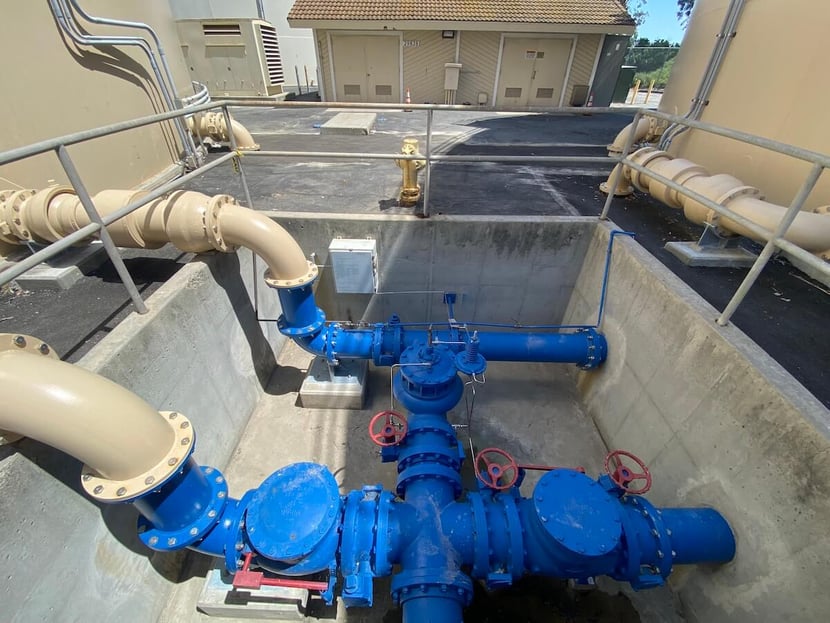
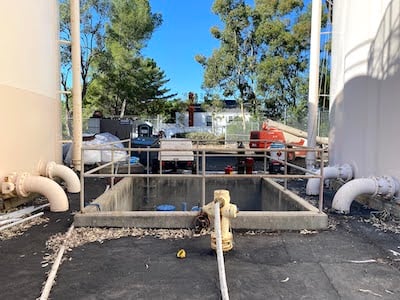
The District’s reservoirs were constructed between the years 1963 and 2002. As such, the District was compelled to proactively assess the aging conditions of its existing reservoirs, identify solutions to extend their remaining service lives, and mitigate risks caused by potential seismic events.
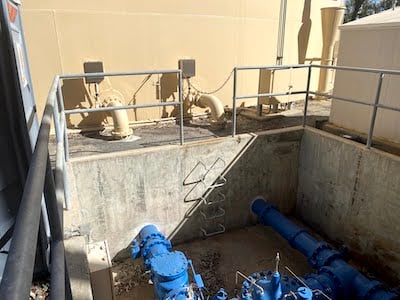
In June 2015, a Steel Reservoir Assessment Study (2015 Study) was completed for the District assessing each of the 32 steel reservoirs. The assessment concluded that 18 of the 26 steel potable water reservoirs needed seismic improvements, including mechanical and structural retrofits, to comply with current seismic codes and standards. These retrofit recommendations included the expansion of the existing ring wall foundations for 8 of the reservoirs and the installation of flexible expansion joints at select inlet, outlet, and pipe drainage locations for 17 reservoirs.
To implement the seismic retrofits proposed, the District retained LEE + RO, Inc. (LEE + RO) to provide the preliminary and final design of these improvements along with construction phase support services. A preliminary design technical memorandum (PDTM) was first prepared by LEE + RO to document the design decisions and methodologies used and prepare preliminary layouts for the District’s approval. Upon acceptance of the PDTM, the preliminary drawings, specifications, and cost estimates were refined, and the final bid set package was put together. The project was successfully completed in July 2023 with minimal contractor change orders.
Moreover, from the start of the project, LEE + RO was able to identify overly conservative assumptions used in the 2015 Study and was able to provide significant cost savings to the District by reducing the number of reservoirs that required ring wall improvements.
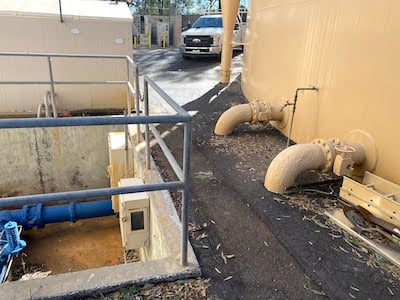
Project objectives included formalizing the basis of design to optimally construct the expansion of the ring wall foundations while simultaneously supporting the existing reservoirs during excavation, evaluating the spatial feasibility due to existing site constraints, and installing the flexible expansion joints to the existing rigid piping as recommended in the 2015 Study.
As is common with most existing infrastructure locations, site constraints and availability of space posed significant challenges. Installation of the new flexible expansion couplings required extensive lay lengths not readily available due to the congested nature and limited spacing from the short connection runs between the existing reservoirs and connecting valve vaults. Furthermore, identifying optimal methods for achieving the improvements while also minimizing the duration the reservoirs were to be taken out of service posed additional challenges. This task was further complicated because this Project was funded and governed through a Hazard Mitigation Grant Program by the Federal Emergency Management Agency (FEMA), which presented some unique challenges.
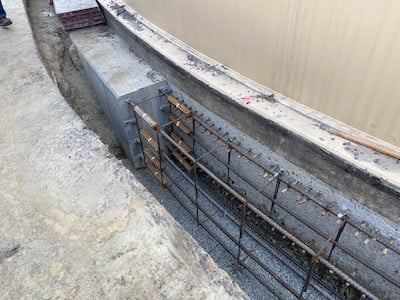
To implement the ring wall expansions, the recommendations proposed in the 2015 Study of widening the ring footing cross sections without unloading them were reviewed and revised by the LEE + RO structural team to a more feasible and cost-effective method. LEE + RO recommended that for the new footing soil contact area to be effective, the existing footing must be first unloaded, then retrofitted, and reseated so that the loading is distributed to both the existing and newly widened portions of the ring footing. Although this method also involved draining the water from the tank and constructing the proposed ring beam expansion, it significantly reduced the construction duration required from the previous method.
Moreover, through the course of LEE + RO’s due diligence and review of the previous 2015 Study, our experienced staff identified overly conservative assumptions used in determining which reservoirs were in need of ring wall expansions. LEE + RO’s structural staff performed new sloshing analyses and ring beam design calculations and utilized a more appropriate soil-bearing capacity. Due to LEE + RO’s observations and independent analyses, the District was able to confirm that only 2 reservoirs needed ring beam retrofits, instead of the 8 reservoirs identified in the 2015 Study. It is estimated that this saved the District over one and a half million dollars.
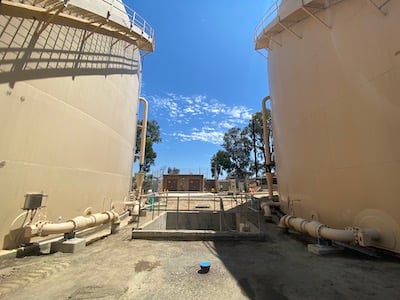
Due to the installation constraints from the short connection runs between the reservoirs and existing valve vaults, an adequate solution required unique piping configuration alternatives for each site. These unique piping configurations were required to properly insert the flexible expansion joints while retaining the couplings’ integrity and minimizing the points of failure from the tank to the location of the new flexible coupling. These unique piping configurations included snaking the new piping under or over conflicting utilities or moving the existing pipe and tank penetration locations altogether. Various layouts were provided to the District for their selection of a preferred alternative.
Being a FEMA-funded project meant adhering to specific regulations for bidding requirements which impacted the design and basis of design components. The grant requirements also mandated a tight performance deadline of 36 months, which included both design and construction phases. To meet these requirements, LEE + RO worked closely with the District to tailor the design as needed and ensure all basis of design and associated technical specifications complied with the grant requirements. Additionally, LEE + RO provided expedited design turnaround times along with efficient designs of the proposed improvements by our experienced staff to mitigate any potential construction delays.
LEE + RO was able to provide cost-saving design solutions for the necessary ring wall expansions, as well as a smooth construction phase as a result of our experienced staff. The LEE + RO design ensured constructability was built into the plans and identified optimal design layouts for the installation of the flexible expansion couplings that aligned with the existing constraints. These solutions overcame the hurdle of a confined site and also determined the appropriate improvements for seismic safety to facilitate the independent movement between the reservoir connections and the pipe’s ground penetrations.
This project establishes a clear path for the District’s goal of seismic reliability for its potable water storage network and continued service to its customers.